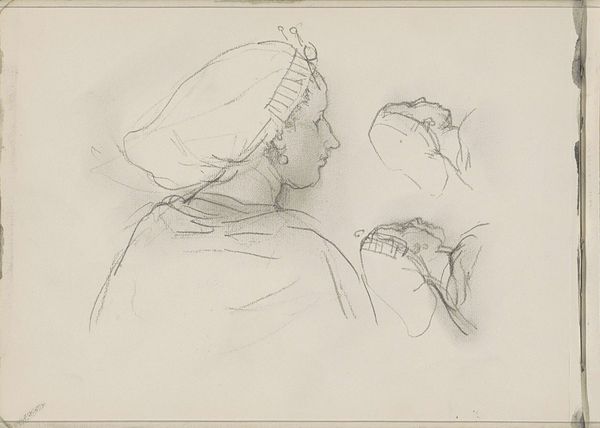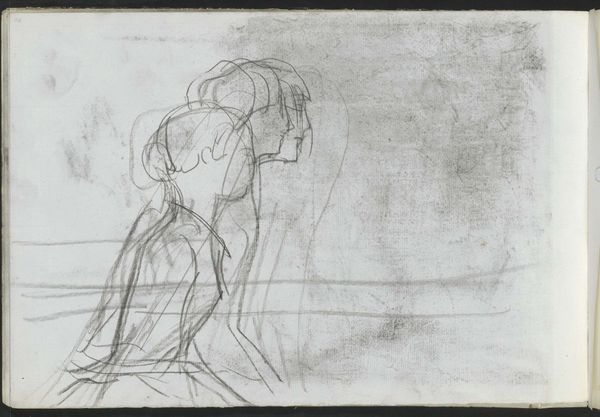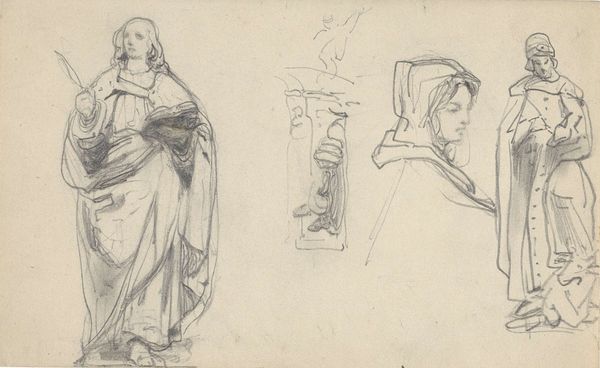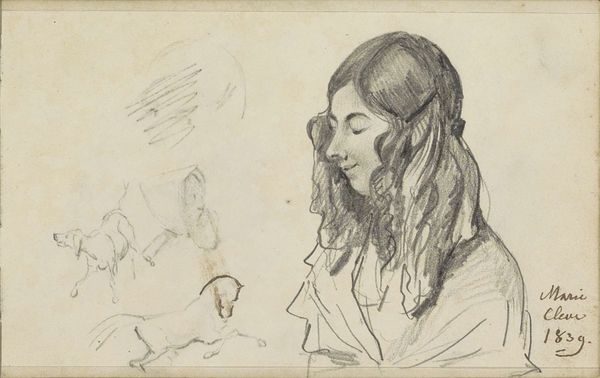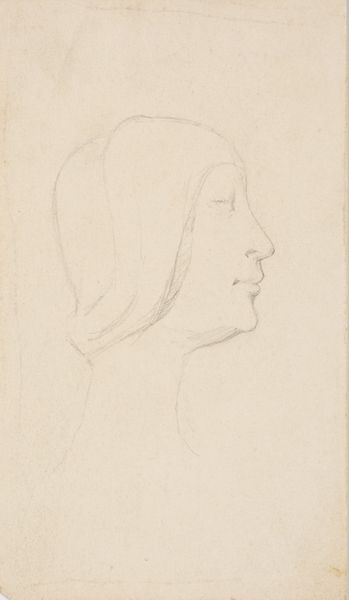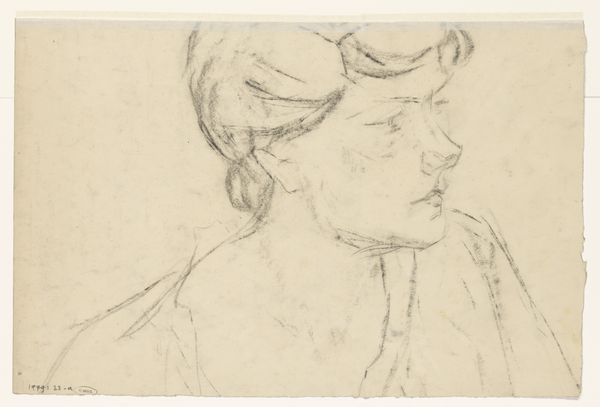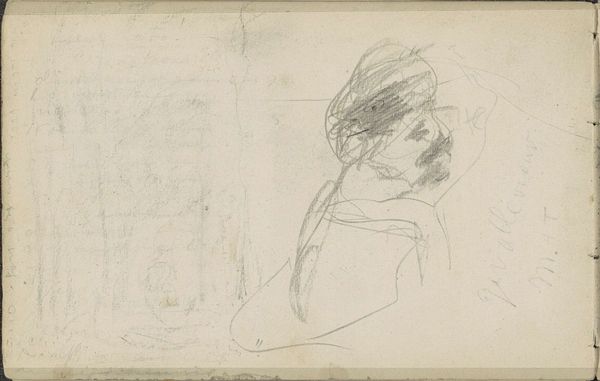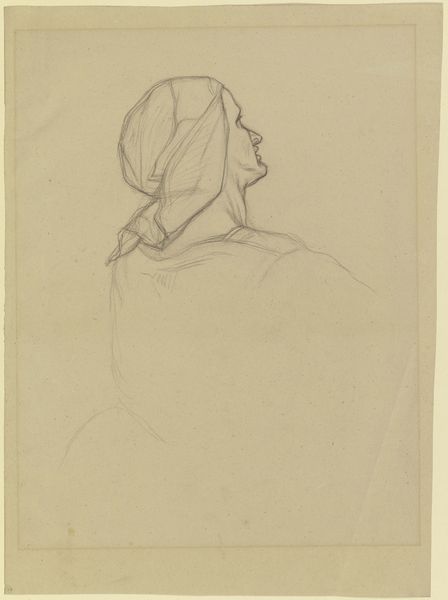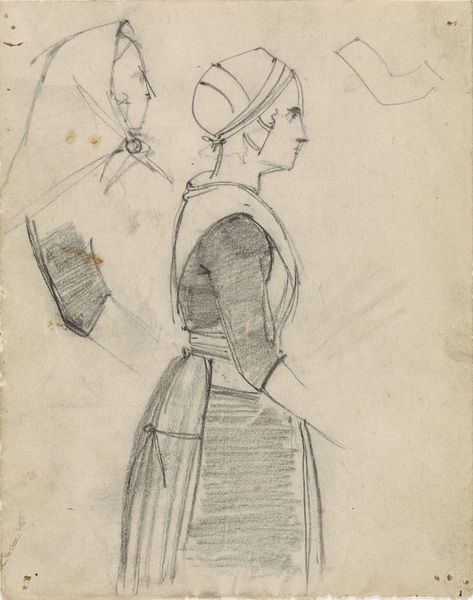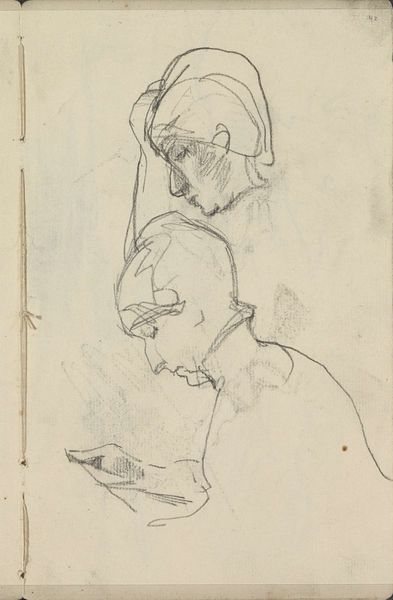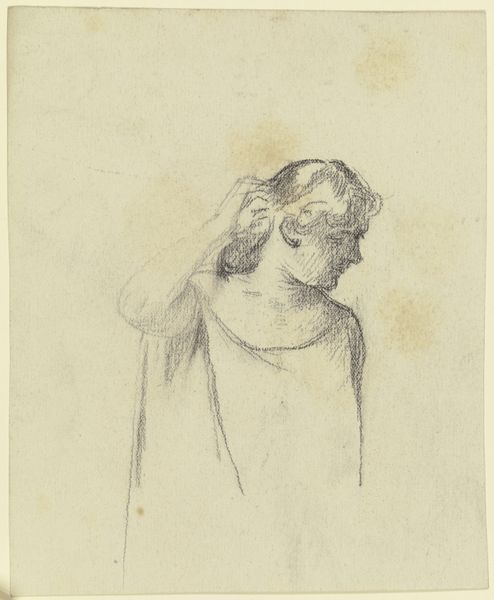
Copyright: Rijks Museum: Open Domain
Editor: This is "Vrouw in Scheveningse klederdracht," a pencil drawing by Johan Antonie de Jonge, dating roughly between 1881 and 1927. It has the intimate, personal quality of a sketch. What strikes me is the sitter’s reserved expression; how do you interpret this work? Curator: I see this not just as a portrait, but as a quiet statement on identity and place. Consider Scheveningen during this period – a fishing village, and its inhabitants clinging to traditional ways of life. This woman's clothing is more than fabric; it's a visual assertion of cultural identity, particularly in the face of increasing modernization. How do you think her positioning in profile affects our reading of her? Editor: It's interesting that you mention her traditional clothing. I was mainly drawn to the subject's stoicism, the fine lines, her turned head. The profile view definitely creates distance. It almost feels like a captured moment. Curator: Exactly. The choice to depict her in profile, averted gaze suggests both pride and perhaps a hint of reservation, even resistance. Think about the power dynamics at play - who is capturing her image, and for what purpose? This work raises questions of representation, particularly of marginalized communities. Are we looking *at* her or *with* her? Editor: That is a complex, layered interpretation. So it goes beyond a simple sketch, really examining the circumstances of its creation. Curator: Indeed. Considering the historical context enables us to ask crucial questions about who gets to tell whose story and how that story is shaped. Art serves as a historical record, but it is up to us to critically engage with its underlying message. What do you take away from this, thinking about it now? Editor: I’m struck by how much more there is to a simple pencil drawing, like this one. I’m thinking more deeply about the ethics and responsibility of portraying individuals and communities.
Comments
No comments
Be the first to comment and join the conversation on the ultimate creative platform.
